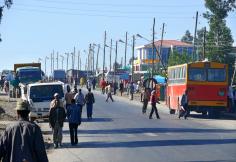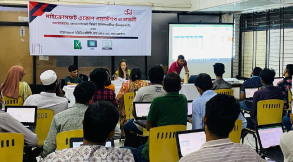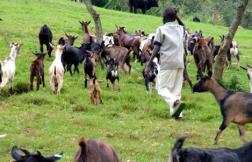Price variation is a typical feature of markets in low and middle income countries. Retail firms that regularly stock food staples and other household commodities face substantial price variation when purchasing in wholesale markets. How much of this input price variation passes through to output prices for rural customers? I use a panel of firm-level wholesale and retail prices from 270 urban and rural retail firms in Tanzania to evaluate passthrough from input price shocks on staple food prices. Rural firms smooth both negative and positive input price shocks more than urban firms. Urban firms passthrough nearly 95% of input price increases, while rural firms passthrough only 55% of input price increases. Price adjustments are asymmetric; rural firms passthrough more cost savings and less cost increases, suggesting that rural customers enjoy partial insurance from negative price shocks. By exploring possible mechanisms, I find evidence that smaller community size among rural firms is associated with lower passthrough on negative price shocks. At the same time, distance to markets and competitive pressure matters as well - rural firms with more competitors and further from urban markets have higher passthrough rates, consistent with a competitive market framework with transaction costs.
STEG Working Paper Series
• Research Theme 1: Firms, Frictions and Spillovers, and Industrial Policy,
Research Theme 4: Trade and Spatial Frictions
Do Small Firms Partially Insure Customers from Price Increases? Evidence from Retail Firms in Tanzania

Related content







































































































